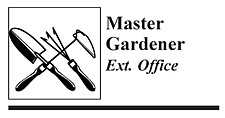March 1, 2007 at 7:52 a.m.
The goal of pruning mature trees is to maintain their structure and form by removing dead branches. Thinning large branches will reduce the weight and wind resistance of the tree and allow light penetration to maintain inner growth.
Remember, pruning should always be performed sparingly. Over-pruning is extremely harmful because without enough leaves, a tree cannot gather and process enough sunlight to survive.
When a portion of a tree's canopy is removed during the dormant season, we often notice an increase in new growth from the remaining branches. This occurs because the energy stored in the roots and branches is channeled to fewer growth points the following spring. Since the same amount of energy is spread among fewer growth points, each new shoot grows a little more than it would have if the tree had not been pruned.
There are several types of pruning. One type is called crown cleaning. This is the removal of dead, dying, diseased or weakly attached branches and water sprouts from the tree's crown. Crown thinning is where you remove some branches to increase light penetration and air movement.
Crown raising is the removal of lower branches of a tree to provide clearance for buildings, vehicles and pedestrians.
Proper pruning cuts do not injure the branch bark ridge or the branch collar. The branch bark ridge is the raised line of bark that forms between the branch and the trunk. This ridge lengthens outward as the branch and trunk grows in diameter.
The branch collar is the living, swollen trunk tissue that surrounds the base of a branch. The size of the branch collar and branch bark ridge varies between individual trees and tree species.
The branch bark ridge and branch collar are involved with the natural defense mechanism of a tree. Flush cuts made inside the ridge and collar, destroy the tissue of the tree that defends against decay. Proper pruning cuts are made as close to the branch bark ridge and branch collar as possible, without removing or injuring it.
If the pruning cut is made too far away from the branch collar, a stub will remain. Stubs provide a perfect energy source for insects and disease organisms.
Proper pruning is one of the best things a person can do for their trees. Improper pruning is one of the worst. A healthy tree will seal itself and wound dressing may actually interfere with this process.
This is a good time of year to prune most trees, especially oaks. It is also a good time to start pruning fruit trees, especially apple trees.
Again this year Jim Birkholz will kick off our spring series of classes with his popular session on how to prune apple trees. He owns and operates the Pleasant Valley Orchard south of Shafer. Birkholz will show us how to prune young fruit trees to get the production from them and also, how to renovate old trees back into production. Last spring his class drew about 60 people who wanted to know about pruning fruit trees.
The class is free to the public and will be Tuesday, February 13, at 6:30 p.m. Come join us at the Senior Center in North Branch.
Saturday, March 3, is the date for our 9th annual Gardening Bonanza at the Abundant Life Church, west of North Branch. We will offer several classes that Saturday and Birkholz will conduct a class on pest control on fruit trees.
Registration brochures were mailed Monday, Feb. 5 to those on our mailing list. If you did not receive one, you can call or stop by the Extension office 651-674-4417. You can also find it on our web page in the Hot Topics' box: http://www.extension.umn.edu/county/chisago.





Comments:
Commenting has been disabled for this item.